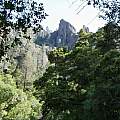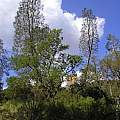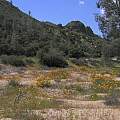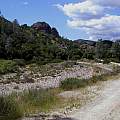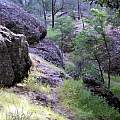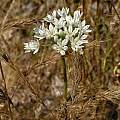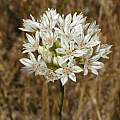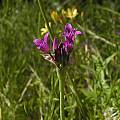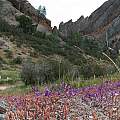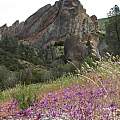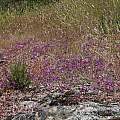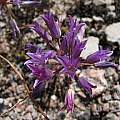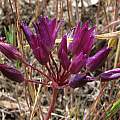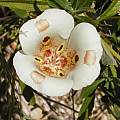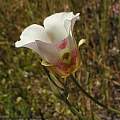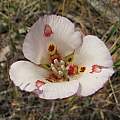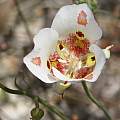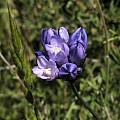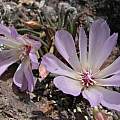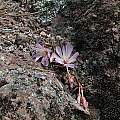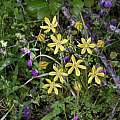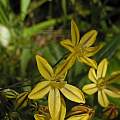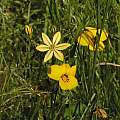Pinnacles National Park is an area with interesting geology and geophytes. It is in San Benito County on highway 146 off interstate 101 southeast of Salinas, California. These chaparral and grass covered rocky hills are part of the Central Coast Range. A 40-square-mile site, it includes caves and towering volcanic rock formations popular with climbers. Previously a National Monument, it became the United States' 59th national park January 10, 2013. All the photographs on this page were taken at Pinnacles National Park.
Allium species:
Allium amplectens is common in hot dry openings west of the Sierra Nevada in California and occasionally in Oregon and Washington. Photos by Mary Sue Ittner were taken April 2005.
Allium crispum is a species that grows in the coast ranges of California south of San Francisco in clay and serpentine soils. This is a long blooming Allium. Photo below was taken in situ by Mary Sue Ittner showing a flower in bud.
Allium fimbriatum is restricted to California where they grow on dry, well-drained slopes. There are three varieties of the species.
Allium fimbriatum var. fimbriatum has rose purple flowers with flaring tips. It grows in gravelly volcanic or serpentine clays. The photos below were taken by Nhu Nguyen.
Calochortus species:
Calochortus venustus is found in both the California coast ranges and the Sierra Nevada. It is found in open grassland and in mountain meadows at at elevations ranging from sea level to 8,000 feet (2600 m). Photo 1-3 were taken by Mary Sue Ittner in April 2005 where it was growing on a bank next to the road. Photos 4-5 were taken in in the same location by Nhu Nguyen.
Dipterostemon species:
Dipterostemon capitatus (syn. Dichelostemma capitatum) is widespread in California, spilling into Oregon and Baja California from the coast to the foothills and even to the deserts. The photo below was taken by Mary Sue Ittner.
Lewisia species:
Lewisia rediviva is widely distributed throughout the western United States. The photos below were taken by Nhu Nguyen.
Triteleia species:
Triteleia lugens is found in dry, sunny to partially shaded, clayey, forested or brushy places between 328 and 3280 feet (100- 1000 meters). It is rare, but grows in scattered locations. Photos taken by Mary Sue Ittner in April 2005 where it was growing along a shady trail with Collinsia heterophylla and Viola pedunculata.
